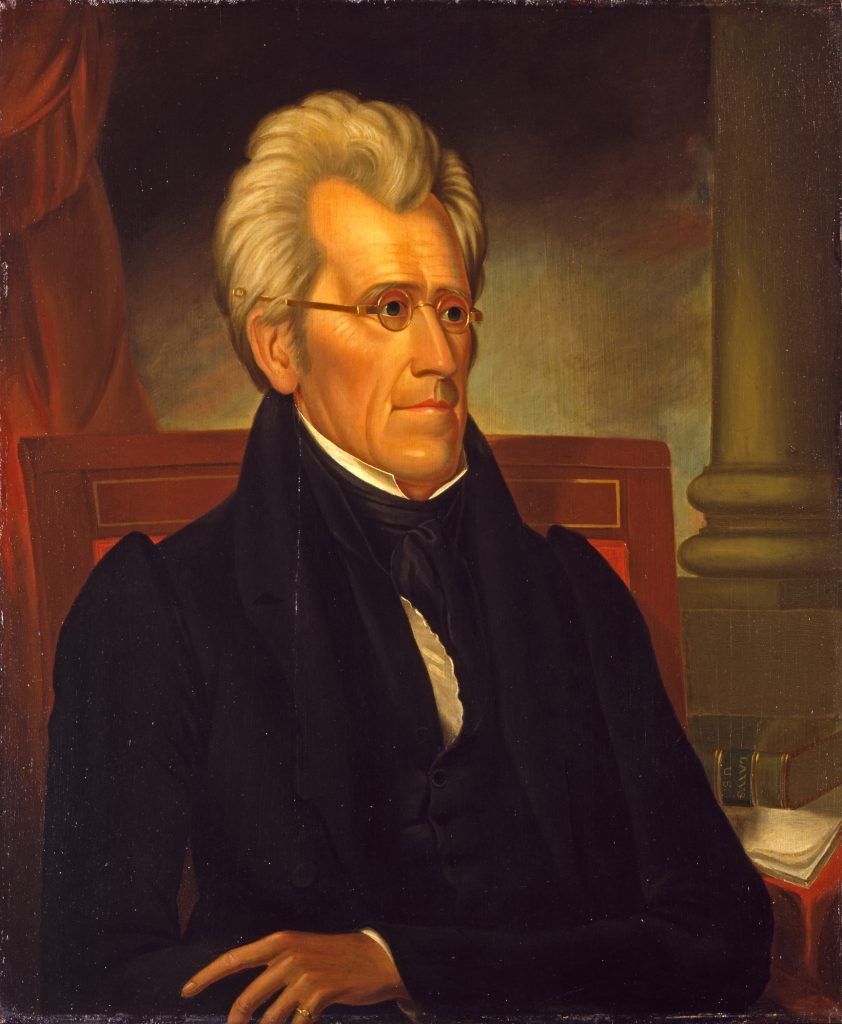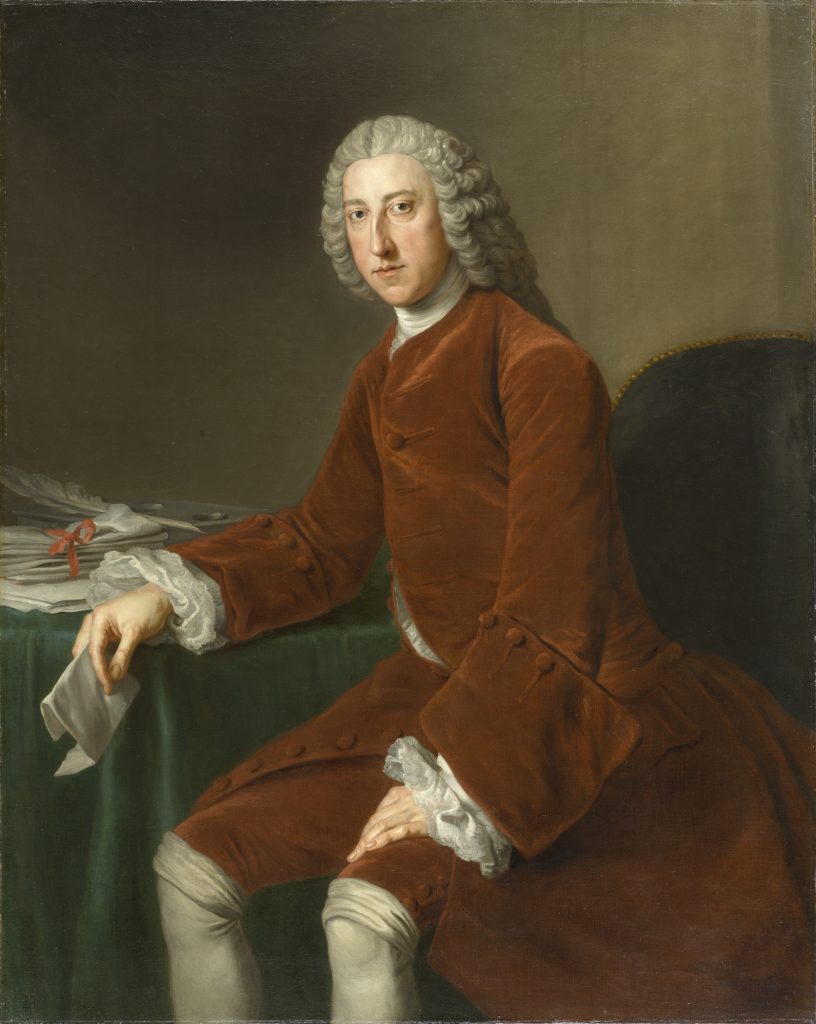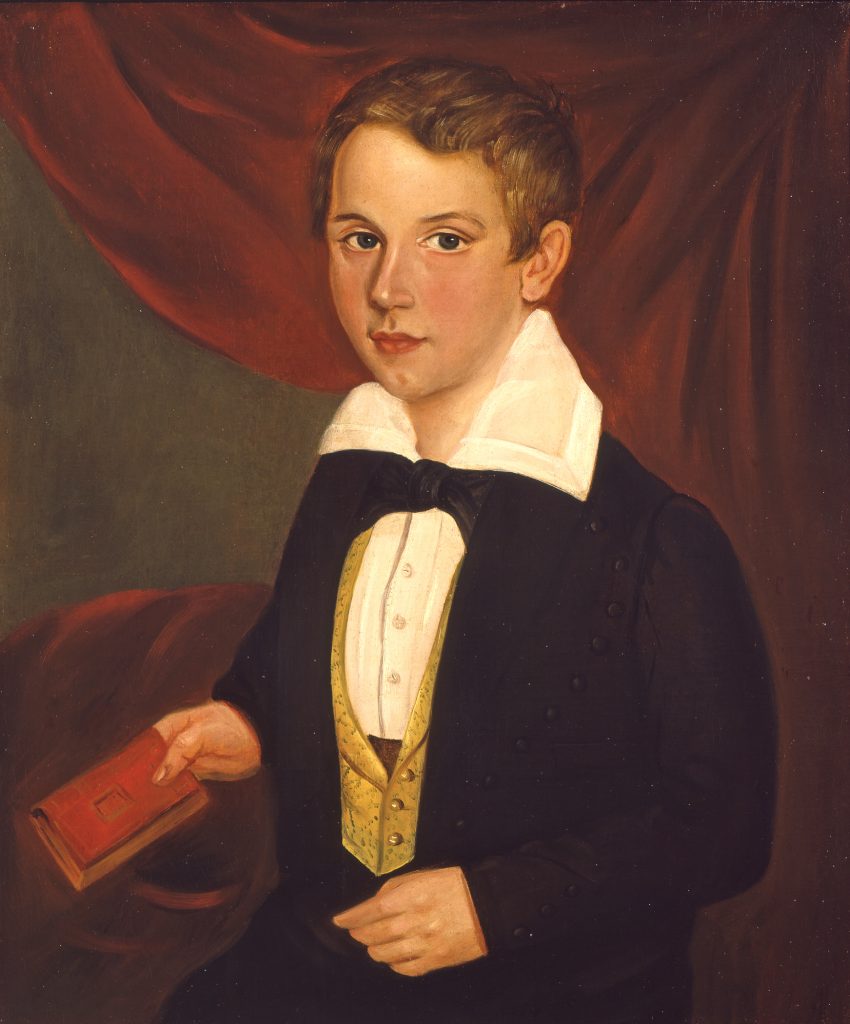1. Show the three portraits Andrew Jackson, William Pitt, and Portrait of a Boy to the entire class. Define and discuss the use of symbolism (for example, the law book behind Jackson) in each of the works of art: What does the word “symbolism” mean? How are symbolism and the concept of meaning connected? How do artists use symbols to convey meaning in their work? Identify some symbols in the portraits. What do you think these symbols might mean? Talk briefly about the artists, particularly Ralph E. W. Earl and his responsibilities as Jackson’s “court painter.”
2. Provide an introduction to the life and contributions of Andrew Jackson, a native Carolinian who became president of the United States. Explain his involvement in the creation and passage of the Indian Removal Act of 1830 and how it affected the Native Americans in North Carolina, particularly the Cherokees. Trace the path of the Indians out of the state along the Trail of Tears by displaying a map on the overhead. Discuss the conditions faced by those American Indians who stayed behind and disobeyed the law.
3. Assign students an important historical figure to research from the Trail of Tears era. Provide time for them to visit the school library or use the computer lab to search for resources. Instruct the students to complete a graphic organizer with important information about their assigned individual.
4. Once the research has been completed, reconvene the entire class and share the three historical portraits again. Reiterate how the artists used special symbolism in the pictures to illustrate key features of each of the individuals (such as Jackson wearing black mourning clothes to represent his grief over the loss of his wife).
5. Before distributing art materials, ask the students to brainstorm how they would like to illustrate their famous historical figure. Encourage them to sketch out a plan on a piece of notebook paper. Make sure that they include in their sketches several symbolic references to specific characteristics of their subject. For example, they may want to dress their person in certain clothes, add a background that suits the person’s native environment, or place specific objects around the person. The symbols should be used to convey a meaning about the person.
6. Allow the students an opportunity to paint, draw, or create digital portraits of their assigned historical subjects using their sketches as planning documents.
7. While the paintings are drying, introduce the concept of a cinquain poem. Demonstrate how to write this type of poem by creating one about Andrew Jackson as a group. A sample poem appears below.
Andrew Jackson person’s name
Strong, Powerful two adjectives describing the person
Leading, Vetoing, Fighting three action words
Born in the Carolinas four-word phrase
President nickname or noun
For additional examples, please see the Web sites listed in Lesson Resources.
8. Ask the students to create their own cinquains about the famous person that they researched. Mount the poems at the bottom of the historical portraits, and display them on a bulletin board for everyone to enjoy.
Written by Jill Taylor, NCMA Educator


